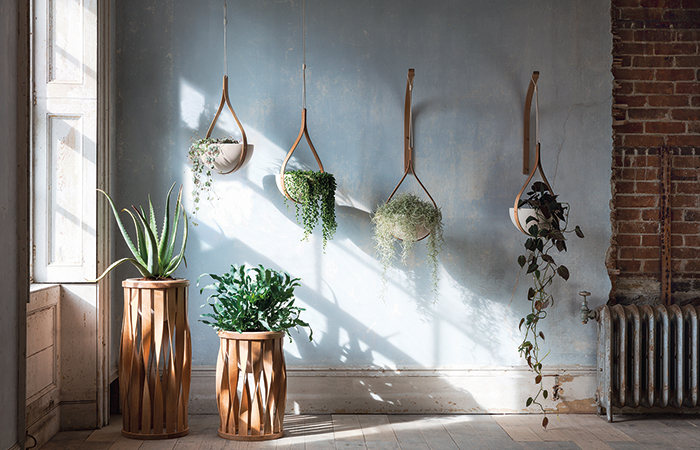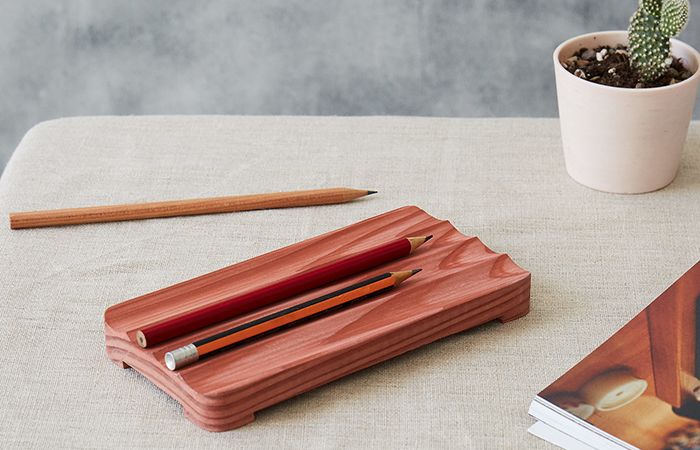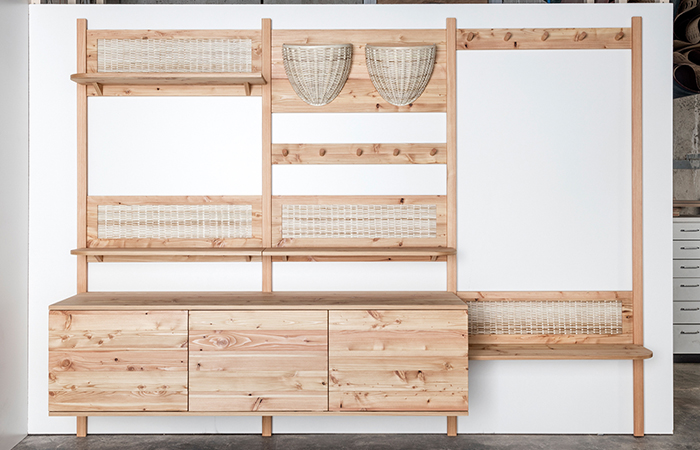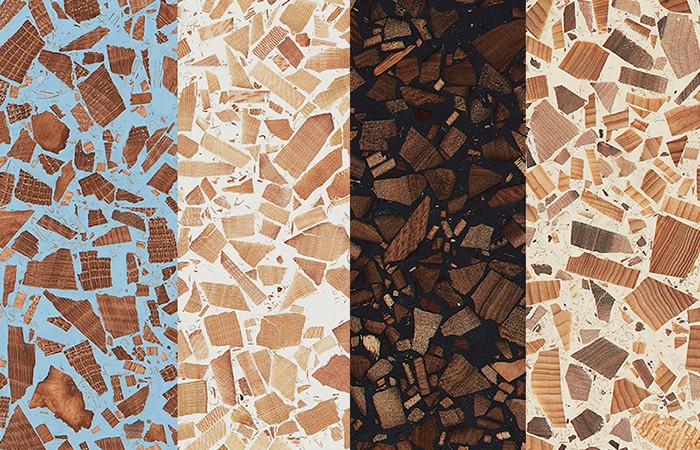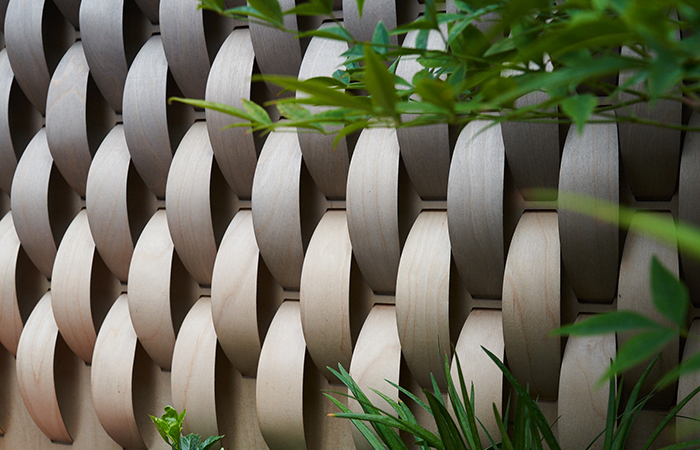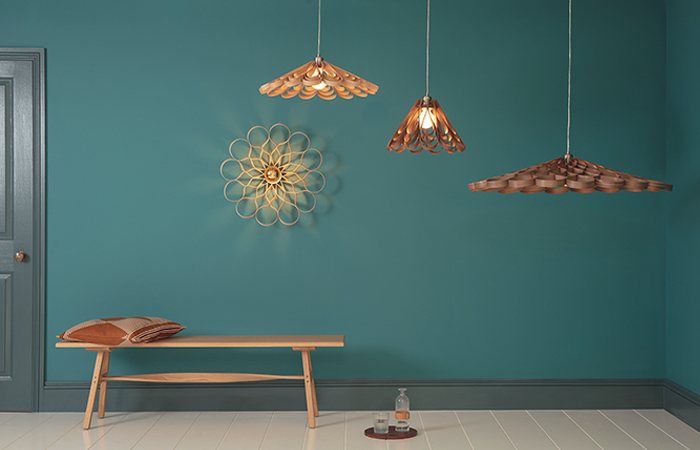Considering our material roots
When considering the longevity and influence of all the materials that we know and use on the planet, it’s easy to conclude that, being the oldest, stone must carry the most significance to us a species. After all, all of the natural stone we know was formed over millennia, as the earth itself took shape. Add to this, there’s an entire age of humankind named after it, having been used in abundance by our early ancestors. But there is perhaps another contender for the accolade of ‘most influential material known to humankind’, or at least a joint winner.
Consider for a moment how the stone hammer, axe or arrow was formed. None would work with lumps, albeit well shaped ones, of stone alone. There is another common and essential material being utilised here: wood. Whilst not quite as ancient in its genealogy, its genus was still one of the earliest to form on the earth and it has continued to thrive well beyond the Stone Age, remaining a stalwart ally of human development to this very day.
Although the hard evidence may have perished over extreme durations, those initial design pioneers, who fashioned intricate tools from stone and wood millions of years ago, lay the foundations for many, many more to follow. Having passed down the knowledge and taught the skills necessary in turning trees into tools, homes, boats and bridges, further innovation with wood has followed.
Today, it is another of those ubiquitous materials that spans pretty much every corner of the earth. We come across wooden objects and structures continually in our daily lives, in part because of its versatility. But of course, wood remains a champion because of its sheer abundance. And where stone forms and emerges over aeons, trees by comparison grow in the blink of an eye. As such, if handled responsibly, the ability of trees to replicate themselves and to grow relatively quickly makes wood a wholly sustainable resource.
The scope of craft skills and broad array of species available, coupled with the sustainable nature of wood, make it the go-to material for a crop of contemporary designers.
Here in the UK we have a great variety of both non-native and indigenous trees but, like a number of designers, it’s in the latter that Sebastian Cox focuses his attention. Having set up his studio in Lincolnshire in 2010, Cox’s team is now based in London. Specifically sourcing British Hardwoods, which they process through their own mill, they create exquisite handmade furniture, lighting and accessories.
The richness of the studios output is thanks to the collective skill of the ‘wood enthusiasts’ in the team, their craftsmanship and knowledge drawing a line back to those early wood pioneers. Importantly, there is a conscious resourcefulness at the heart of the studio. The foundations of the studio almost literally grew out of Cox’s knowledge of coppicing, which not only yields timber to work with but also stimulates further growth in the trees in question; notably Hazel and Ash in this case.
Having their own mill also means that they can plank trees that would otherwise be sent to the chipper and they even use the leftover lumps from their furniture making to create handy small-scale objects in the Offcut range. The desire to use would-be-waste timber is something that stimulated Conor Taylor when developing Foresso, the world’s first wood terrazzo.
Then a material librarian, Taylor already understood the unique properties of wood and our natural desire for it’s unique grain. But in discovering that large sections of any given tree are deemed unusable due to branch junctions and knots, he set about a creative process of experimentation whereby he literally smashed the blocks to create aggregate. This natural and grained aggregate is then set into resin to form large terrazzo panels, each one completely unique and yet uniform, now produced in volume in partnership with fellow UK surface manufacturer Solomon & Wu.
Over in Italy the grain of wood is once again celebrated by another manufacturer rich in craft processes. The skill of craftsmanship is immediately arresting in the surface of the Oxymoron table by Henge. The patternation of these large-scale tables, which stretches across the top and curved-edge surfaces, is the result of a painstaking handmade ‘micro mosaic’ process they call Forest Fusion.
Joining the veneers, which are cut into organic shapes, creates a flowing pattern akin to marbled stone. But the ability to strip timber down into micro-thin layers and manipulate them freely, as well as the distinct wooden grain it exudes, makes this process and resulting aesthetic unique to wood alone.
The ability to shape and form wood is something that grabbed the imagination of Emily Skinner, a trained textile designer, when she started to experiment with bending strips of timber into gridded slats to form 3-dimensional undulating forms. In 2008 she set-up Evan James Studio, with wood the central focus to her studio practice, as she explains:
“Wood is not commonly considered the material of choice for a textile designer, but its highly sensual qualities, renewable credentials as well as its malleable and fluid properties really excited me. The challenge of exploring and exploiting these properties is at the very core of what we do as a studio.”
Others have worked with wood right from the beginning. Tom Raffield shares an interest in the ability to shape, form and bend wood, creating attractive objects inspired by nature – a fitting approach given the origins of his material of choice. Indeed, whilst his contemporary lighting and furniture pieces push the boundaries of wood using traditional techniques and modern technology, the affinity to nature is a cornerstone of his practice. Not only does he allow the raw beauty of wood and its grain to simply be, or use naturally inspired processes such as steam bending but also the curved and twisted objects he creates bear reference to forms found in nature. Products such as the steam bent planters of the Green Range take this one step further by including plants directly within them; nature meets nature. This leaning towards biophilic design principles is a deliberate one as Raffield explains:
“Celebrating the health and wellbeing associated with biophilic design, using natural, sustainable materials and drawing inspiration from the natural world is at the core of everything we do.”
The current trend, or rather new way of thinking, in engaging with how materials and objects affect us as humans, and how we can make this have a positive impact, may well have set the stage for wood to firmly wear the crown of ‘most influential material know to humankind’. Either way, it’s safe to say, wood is good.
Tom Raffield will be taking over London based showroom Coexistence to coincide with London Design Festival.





